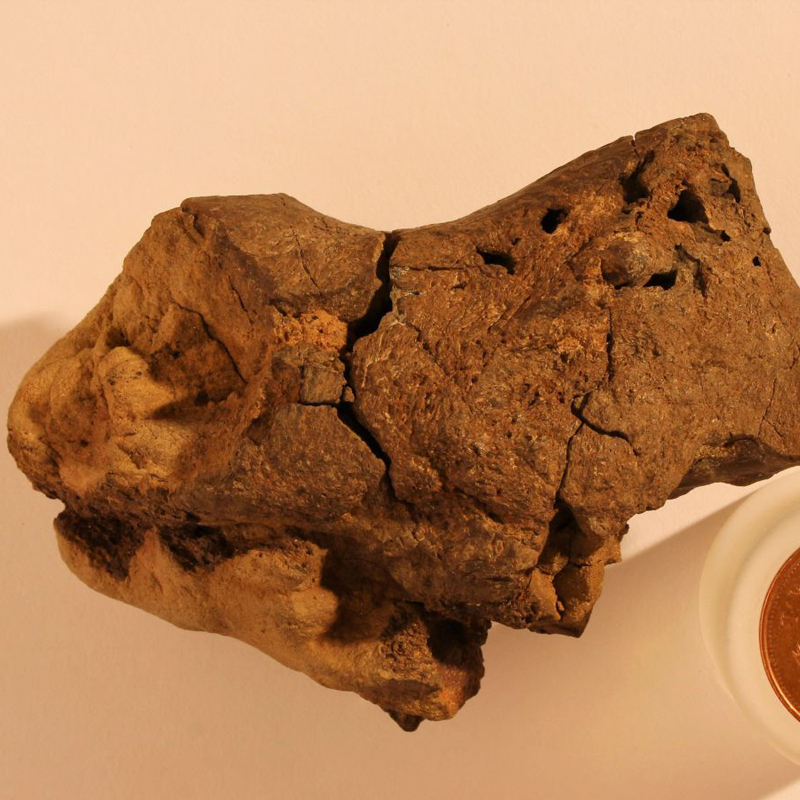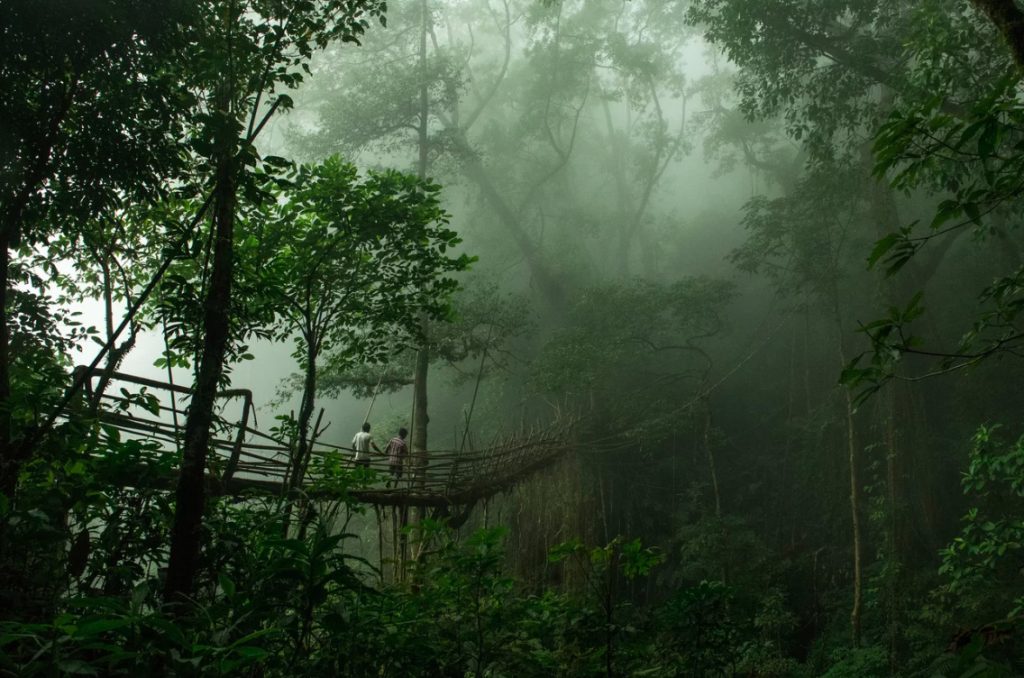Link About It: This Week’s Picks
The potential of prickly pear cactus, a mummified dinosaur, floating farms and more

Insights From Rare Mummified Dinosaur Skin
 Insights into the Mesozoic era usually come from fossilized bones, making the preserved skin of “Dakota”—a duck-billed dinosaur from an Edmontosaurus specimen—particularly rare. The finding, discovered in South Dakota in 1999, is uncommon because skin is trickier than bones to preserve but new research makes the discovery even more peculiar. Previously, scientists believed that preserved soft tissue had to be buried immediately after death or contained within dry surroundings. Instead, a new study indicates that the mummified skin was left in a wet environment, out in the open at the mercy of scavenging carnivores—but their bites created pathways for liquids and gases to leave the corpse, enabling mummification. “The skin itself is a very deep brown, almost brownish black, and it actually has a bit of a shine to it because it has so much of that iron in it,” says Mindy Householder, a co-author of the study. Learn more about this glittery dinosaur skin at Smithsonian Magazine.
Insights into the Mesozoic era usually come from fossilized bones, making the preserved skin of “Dakota”—a duck-billed dinosaur from an Edmontosaurus specimen—particularly rare. The finding, discovered in South Dakota in 1999, is uncommon because skin is trickier than bones to preserve but new research makes the discovery even more peculiar. Previously, scientists believed that preserved soft tissue had to be buried immediately after death or contained within dry surroundings. Instead, a new study indicates that the mummified skin was left in a wet environment, out in the open at the mercy of scavenging carnivores—but their bites created pathways for liquids and gases to leave the corpse, enabling mummification. “The skin itself is a very deep brown, almost brownish black, and it actually has a bit of a shine to it because it has so much of that iron in it,” says Mindy Householder, a co-author of the study. Learn more about this glittery dinosaur skin at Smithsonian Magazine.
Image courtesy of Education Images/Universal Images Group/Getty Images
Physicist Jess Wade Pens 1,750 Wikipedia Pages for Women Scientists
 Upon discovering that renowned American climatologist Kim Cobb did not have a Wikipedia page, Jess Wade (British physicist and research fellow at Imperial College London) penned her entry—before continuing on a quest to document other women and minority scientists, as well as engineers. Wade has now written more than 1,750 Wikipedia pages for notable figures. “Wikipedia is a really powerful way to give credit to people who, for a long time, have been written out of history,” Wade explains to the Washington Post. She also notes, “Having people know who you are means you get more opportunities.” According to WikiProject Women in Red, only 19% of English Wikipedia biographies are of women, making Wade’s efforts crucial. Read more at the Washington Post.
Upon discovering that renowned American climatologist Kim Cobb did not have a Wikipedia page, Jess Wade (British physicist and research fellow at Imperial College London) penned her entry—before continuing on a quest to document other women and minority scientists, as well as engineers. Wade has now written more than 1,750 Wikipedia pages for notable figures. “Wikipedia is a really powerful way to give credit to people who, for a long time, have been written out of history,” Wade explains to the Washington Post. She also notes, “Having people know who you are means you get more opportunities.” According to WikiProject Women in Red, only 19% of English Wikipedia biographies are of women, making Wade’s efforts crucial. Read more at the Washington Post.
Image courtesy of Jess Wade
Muuwspace’s Customizable Prefab Workspace for Backyards
 Estonia-based design firm Muuwspace has unveiled a hexagonal, modular structure that can fit in backyards or gardens and be used as an office, workshop, studio or a meditation and relaxation room. Named Muuw, the prefabricated room arrives in parts—which include three glass walls—that can be assembled in under two days. It’s composed of durable galvanized steel and comes insulated for year-round use in all climates (though also incorporates a floor heating system). All other materials and colors are customizable. Altogether, it offers 8.9 square meters of interior space. Read more at designboom.
Estonia-based design firm Muuwspace has unveiled a hexagonal, modular structure that can fit in backyards or gardens and be used as an office, workshop, studio or a meditation and relaxation room. Named Muuw, the prefabricated room arrives in parts—which include three glass walls—that can be assembled in under two days. It’s composed of durable galvanized steel and comes insulated for year-round use in all climates (though also incorporates a floor heating system). All other materials and colors are customizable. Altogether, it offers 8.9 square meters of interior space. Read more at designboom.
Image courtesy of Muuwspace
The Vast Potential of The Prickly Pear Cactus
 Like bread fruit, the resilient, versatile and sustainable prickly pear cactus (also known as nopal) has potential to become a more widely used crop for many current and future needs. The drought-resistant plant grows mostly in Central America, but also as far north as Connecticut and as far south as Argentina and can live for 20 years, all the while improving soil quality. It’s already a common ingredient in Mexican cuisine, but can also be used in products including shampoos, cleansers and cosmetics. It’s even functional as fencing, and works as a barrier at South Carolina’s Wild Hope Farm to keep deer off their property. Peanut Belk (head of business operations at the farm) says, “Not only does it produce flowers which attract pollinators, but the fruit we can harvest and sell to different brewers and cocktail vendors. It’s a crop that we don’t have to touch and yet can make a lot of money off of.” Various researchers and groups are looking into more uses for this versatile plant, and are hoping it could solve many issues to be faced due to climate change. The current obstacle is making it appealing to consumers, as Belk says, there’s a need to “build up the market and educate people around what the cacti are and how good they are.” Read more at Modern Farmer.
Like bread fruit, the resilient, versatile and sustainable prickly pear cactus (also known as nopal) has potential to become a more widely used crop for many current and future needs. The drought-resistant plant grows mostly in Central America, but also as far north as Connecticut and as far south as Argentina and can live for 20 years, all the while improving soil quality. It’s already a common ingredient in Mexican cuisine, but can also be used in products including shampoos, cleansers and cosmetics. It’s even functional as fencing, and works as a barrier at South Carolina’s Wild Hope Farm to keep deer off their property. Peanut Belk (head of business operations at the farm) says, “Not only does it produce flowers which attract pollinators, but the fruit we can harvest and sell to different brewers and cocktail vendors. It’s a crop that we don’t have to touch and yet can make a lot of money off of.” Various researchers and groups are looking into more uses for this versatile plant, and are hoping it could solve many issues to be faced due to climate change. The current obstacle is making it appealing to consumers, as Belk says, there’s a need to “build up the market and educate people around what the cacti are and how good they are.” Read more at Modern Farmer.
Image courtesy of Wild Hope Farm
Bangladesh’s Floating Farms Resist Climate Change

In southwestern Bangladesh, farmers are turning to the 200-year-old practice of growing produce on floating rafts as a response to rising sea levels. Bangladesh’s flooding season used to last for around five months which created the necessity for floating farms. Now, however, the land is underwater for eight to 10 months, forcing farmers to revitalize the ancient technique to secure food. To do so, they weave the stems of invasive hyacinths to create rafts (a process that takes almost two months). From there, they plant fruit and vegetable seedlings, including tomatoes, cucumbers, radishes, gourds and papayas. The practice is a crucial lifeline to many that helps grow crops more reliably than on land and it “requires less space than conventional farming and does not need pesticides,” says Bangladesh agricultural officer Digbijoy Hazra. “When we’re fighting… the impact of global warming, floating farming could be the future.” Read more about it—and view the stunning images—at Reuters.
Image courtesy of Mohammad Ponir Hossain/Reuters
Link About It is our filtered look at the web, shared daily in Link and on social media, and rounded up every Saturday morning. Hero image courtesy of Muuwspace












